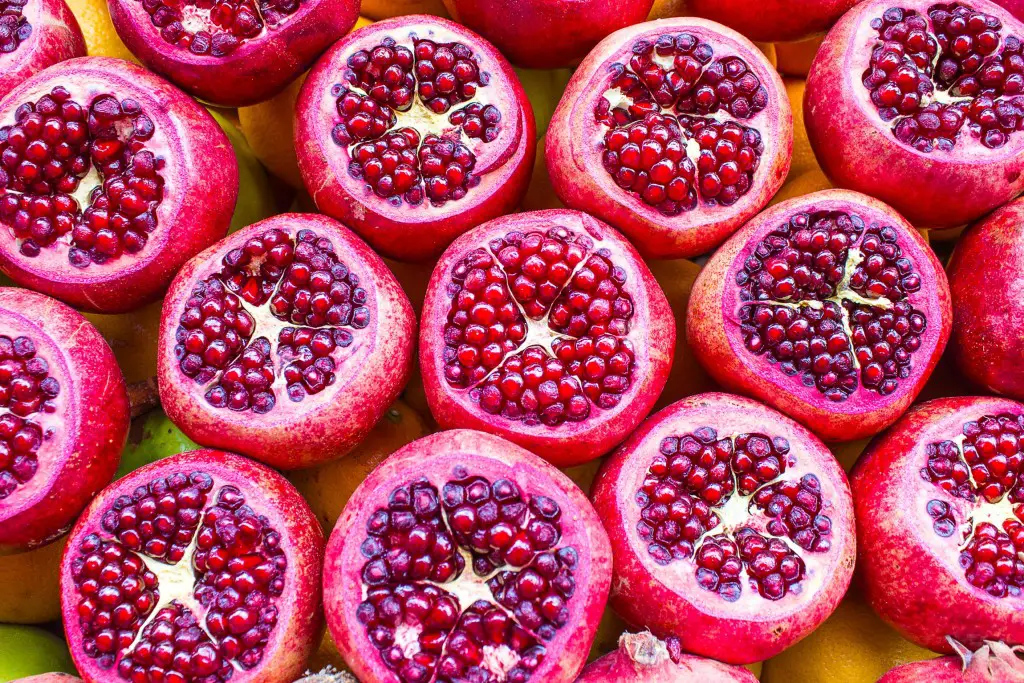The Root Cause(s) of Endometriosis And How To Remedy It Holistically
Tags: opinion

By Mandy Froelich / Truth Theory
Around “that time of the month,” do you find that your PMS symptoms become near unbearable? Do you blow up like a whale? Is it painful to have intercourse? Do you bleed — like, a lot? Do you suffer from infertility? Also, are symptoms like diarrhea, bloating, nausea, and constipation common? If so, you may have endometriosis, a condition that is estimated to affect 14% of all women and 30% to 50% of infertile women.
Now, whether or not you’ve been diagnosed with the condition or you simply answered “yes” to my questions above, I don’t want you to freak out. Why? Because in this post, I’m going to outline the symptoms of the condition, share some facts about how it affects those who have it, and then we’re going to go through a myriad of holistic ways to remedy it naturally.
I know what you may be thinking, “Are you an expert on this topic?” In my own way, I’d say “yes.” Now, I don’t have a Ph.D. (yet) and I’m not a doctor. But, I am a Registered Holistic Nutritionist (RHN) and certified Detox specialist, and there are many women in my family who have suffered from the affliction. Most importantly, the ones who have implemented my advice have also benefited. The same advice also applies to PCOS, which does affect me, but very minimally due to my lifestyle and dietary choices.
Let’s get started, shall we?
Every year, approximately 600,000 women in the United States, just like my mother and aunts, undergo surgery to have their female parts (typically ovaries and fallopian tubes) removed. (The surgery is called a “hysterectomy,” and we’ll talk about it more below.) For many, endometriosis is the culprit. However, it is not the root cause. We’ll cover that later on.
First, what is endometriosis (en-doe-me-tree-O-sis)?
The disorder is caused by tissue that normally lines the inside of the uterus (the endometrium) growing outside of the uterus. The painful condition may spread beyond the pelvic organs, though this is rare. With endometriosis, displaced endometrial tissue continues to act as it would. So, it thickens and breaks down and bleeds with each cycle. But, because of its location, there is no way for it to exit the body. It becomes trapped.
When endometriosis involves the ovaries, cysts called endometriosis may form. The surrounding tissue can become irritated. In some cases, it may develop into scar tissue and adhesions. Over time, the abnormal bands of fibrous tissue can cause pelvic tissues and organs to stick together. Ouch!
As the Mayo Clinic points out, sometimes, the condition is confused for pelvic inflammatory disease (PID) or ovarian cysts. It may also be confused with irritable bowel syndrome (IBS), a condition that causes bouts of diarrhea, constipation, and abdominal cramping. To make things even more confusing, sometimes, IBS can accompany endometriosis, further complicating the diagnosis.

Image Credit: Wikimedia Commons
Conventional Treatment(s)
There is no “cure” for endometriosis. However, the allopathic community does offer a couple of treatment options: hormone therapy and surgery.
- GnRH agonists and oral contraceptives are widely prescribed to women with endometriosis.
- Surgery is another option, though there is a reason to be wary of this treatment. Approximately 20 million women in the USA have had a hysterectomy. And as this research shows, nearly all of them are elective. In fact, about 90 percent of hysterectomies aren’t even necessary. As Very Well Health reports, “The conditions they’re meant to treat can be effectively dealt with in other ways that usually are less risky and that preserve the uterus. For example, a 2017 study found that a minimally-invasive procedure for treating uterine fibroids called uterine fibroid embolization is vastly underused.”
In summary, if your doctor is recommending you have a hysterectomy, maybe you should understand everything about the condition AND other possible treatment options.

Holistic Treatment(s)
Now we’re moving onto my favorite part.
The Root Cause(s) of Endometriosis
Once again, I am not a medical doctor. But, in my humble opinion, a lot of trained physicians don’t know what the heck they’re talking about when it comes to nutrition and women’s health. That’s why we’re covering this very special (and very important) topic together.
From everything I have studied, one of the main causes of endometriosis in the modern world is estrogen dominance. This study found that endometriosis is an estrogen-dependent disease. This means it thrives off of estrogen, which is in excess in people’s bodies who live conventional lifestyles. Research also indicates that many women with endometriosis have a hormone imbalance, mainly estrogen dominance.
Crazy high levels of estrogen? Not so fast…
Contrary to what you might think, the term “estrogen dominance” doesn’t necessarily mean you have crazy amounts of estrogen. It simply means the ratio of estrogen to progesterone is too high.

Image Credit: Michael Simons
Only women are affected by estrogen dominance, right?
Estrogen dominance affects both men and women. We’ll outline the symptoms noticed in women in just a second. In men, estrogen dominance may manifest as the following:
- Sexual dysfunction (low libido, decreased morning erections, decreased erectile function)
- Enlarged breasts
- Lower urinary tract symptoms associated with benign prostatic hyperplasia (BPH)[2]
- Increased abdominal fat (can also be a symptom of low estrogen)
- Feeling tired
- Loss of muscle mass
- Emotional disturbances, especially depression
- Type 2 diabetes
Source: University Health News
What are the symptoms of estrogen dominance?
Women’s health expert Christiane Northrup lists the following symptoms to be signifiers of estrogen dominance in women:
- Decreased sex drive
- Irregular or otherwise abnormal menstrual periods
- Bloating (water retention)
- Breast swelling and tenderness
- Fibrocystic breasts
- Headaches (especially premenstrually)
- Mood swings (most often irritability and depression)
- Weight and/or fat gain (particularly around the abdomen and hips)
- Cold hands and feet (a symptom of thyroid dysfunction)
- Hair loss
- Thyroid dysfunction
- Sluggish metabolism
- Foggy thinking, memory loss
- Fatigue
- Trouble sleeping/insomnia
- PMS
Anyone who is familiar with endometriosis knows these symptoms fall into both categories.

Image Credit: Pixnio
What are the causes of estrogen dominance?
As Dr. Jockers explains, both estrogen and progesterone decline naturally through the aging process. In fact, from the age of thirty-five to fifty years of age, there is a 75 percent reduction in the production of progesterone in the body. During that same age range, estrogen only declines by about 35 percent. However, dietary and lifestyle choices also affect the ratio.
The top causes of estrogen dominance follow:
- Physical nerve stress
Interference to the spine and nervous system leads to elevated cortisol levels. Cortisol levels that are high steal pregnenolone, which leads to lowered progesterone levels. Receiving chiropractic care can help remedy this and improve posture. - Heavy metal toxicity
Mercury, lead, and aluminum can inhibit optimal liver function, leading to poor toxin filtration and increased estrogenic molecules. Eat more leafy greens, herbs (parsley and cilantro), remove aluminum from your diet, and reduce your consumption of processed foods to reduce the buildup of heavy metals in your body. - Liver Issues
The liver is responsible for 400+ tasks each day. When it is sluggish, it can’t lower estrogen levels effectively. Drink lemon-water on an empty stomach 20 minutes before breakfast to cleanse the liver, as well as eat plenty of unprocessed fruits, vegetable, and leafy greens. Teas like dandelion and nettle are good for the liver. Cut out processed sugar! - Poor diet
“You are what you eat,” which is why consuming processed, chemical-laden “foods” will more than likely cause you to become sick. Processed meats and herbicide-sprayed foods increase the levels of xenoestrogenic molecules and put the body into an estrogen-dominant state. - Obesity
You are beautiful at any size. But, there is no denying that being obese increases your risk of developing heart disease, diabetes, and/or having a stroke. Being overweight also contributes to estrogen-dominance, as fat cells have an enzyme that converts adrenal steroid hormones into estrogen. The greater the percentage of body fat one has, the more this conversion takes place. - Blood sugar spikes
If you eat high-sugar, high-fat foods that are devoid of nutrition and healthy levels of protein, you probably suffer from blood sugar imbalances. This is an issue because poor blood sugar control results in elevated insulin and cortisol levels. These factors encourage the release of estrogen and lead to deficiencies in key nutrients, including vitamin C, magnesium, and B6. - Industrial chemicals
Common household cleaners, chemicals like BPA (found in reusable plasticware), toxins in makeup, and chemicals in personal hygiene products damage DNA, leading to an increased risk for breast and endometrial cancer. Fortunately, safe and effective cleaners and nontoxic makeup are easy to find nowadays. - Poor sleep and chronic stress
These two factors play a big role in hormone imbalances. Not only do they increase stress hormone release and lead to adrenal burn-out, but both also deplete the body of pregnenolone, contributing to estrogen dominance. - Consumption of caffeine
Regular consumption of caffeine increases estrogen secretion, leading to the depletion of key nutrients which are essential for neutralizing bad estrogen metabolites in the liver. - Hormone Therapy
Taking synthetic estrogen without any progesterone to balance it out will cause estrogen dominance. Synthetic estrogen is toxic to the body and damages DNA, increasing the likelihood of developing endometrial disorders or cancer.

Let’s take a moment…
That was a lot of information to take in, right? Fortunately, you’re nearly caught up on the ins-and-outs of endometriosis. Once you’re equipped with the right information, you’ll feel more confident about making lifestyle changes to overcome the affliction once and for all.
Starting off on the right foot
If you’re convinced estrogen dominance might be affecting your health, then I encourage you to do the following:
- Drink a green smoothie every single day
A simple green smoothie (such as this one or this one) increases your consumption of nutrient-dense fruits, vegetable, and leafy greens. These are the most medicinal foods you can consume. Plus, it’s a tasty breakfast or snack. And, it’s really easy and quick to make. Bonus: add in a green powder, such as Vita-Mineral greens. - Ditch the dairy
Ugh. Dairy products are allergenic and mucus-forming when consumed pasteurized, which is the legal requirement in the USA. Consuming raw dairy is another argument (each to their own in my own book, though I still stay away from it). Either way, if you’re trying to clean up your body, ditch the cheese, milk, and snacks that contain it. There are plenty of dairy-free foods and milk alternatives to keep you satiated. Worried about getting enough calcium? Read this. - Avoid processed foods, aluminum, and industrial chemicals
Basically, any of the potential “causes” listed above should be avoided. It might be common sense but… - Get outside more
You need to get connected with the Earth. Get outside of your own head, go heal in nature. Take a good book with you, bathe in the sunshine, ground with your bare feet on the Earth, and remember what it’s like to connect with the Divine Feminine, a wholesome and powerful presence that courses through all of us — men and women alike. - Supplements
General supplements that may benefit this condition milk thistle, evening primrose oil, vitamin B6 (also found in leafy greens and nutritional yeast flakes), probiotics, and DIM (also found in cruciferous vegetables, such as broccoli and cauliflower). Dr. Andrew Weil has more recommendations here. For specific recommendations, contact me to schedule a consult. - Address the psycho-spiritual cause of endometriosis
Before any physical symptom can manifest, it must exist on a vibrational level. What affects this? Our thoughts and emotions. To heal endometriosis for good, emotional work needs to be done as well. More than likely, that work will relate to filling your own cup first (rather than always going out on a limb for others), making peace with your connection to the Divine Feminine and womanhood, making peace with childbirth and the cycle(s) of life, and learning to love ALL of the parts of you. I highly recommend this article by Flo Living to learn more.

I hope this resource proves beneficial for all friends and extended family members who read it. If you suffer from this condition and would like to hone in your symptoms and goals specifically, contact me about scheduling a holistic nutrition consult here. I do distance sessions via Skype, so even if you don’t live in Colorado, we can work together.
Until next time,
Mandy Froelich
Featured image: Illustration by Lauren Rebbeck, Pixabay

Leave Comment: